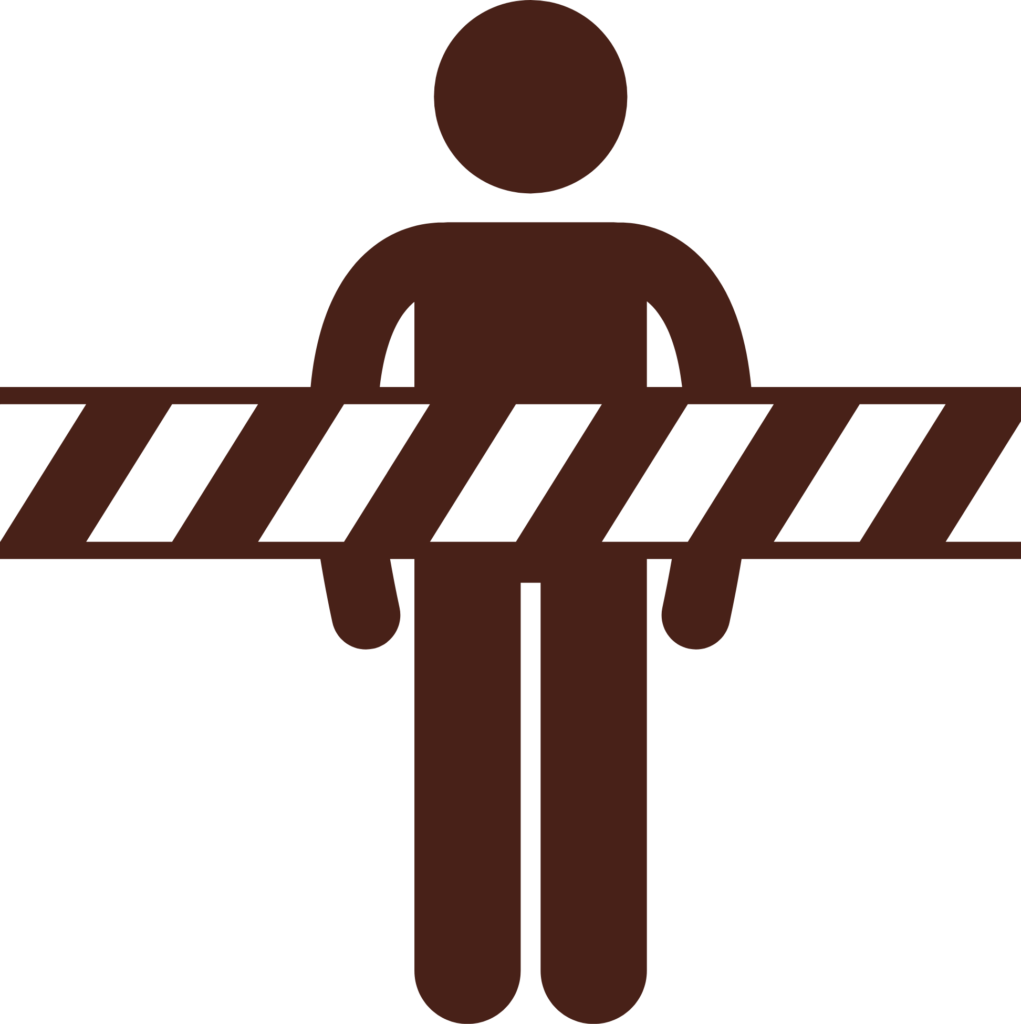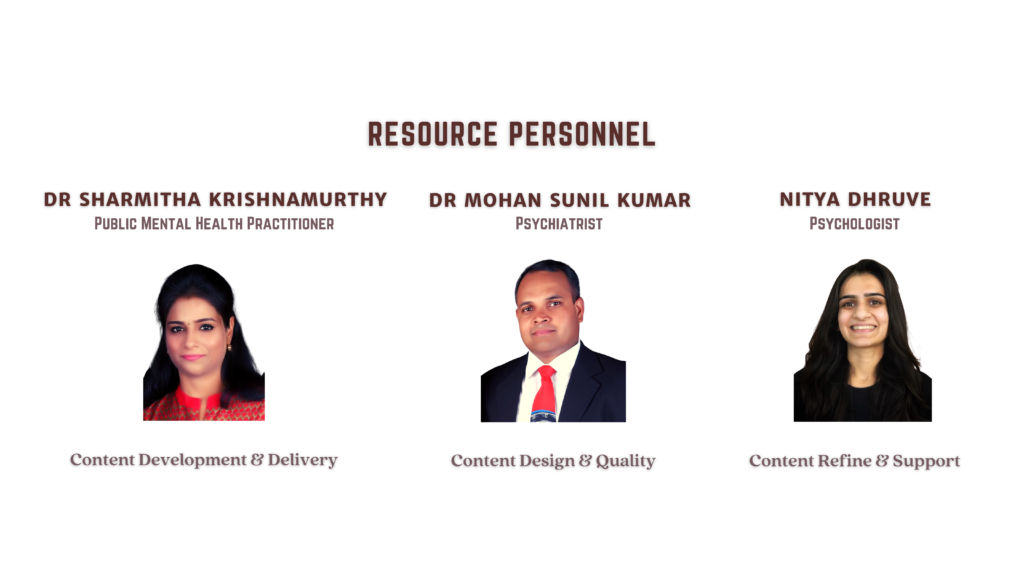In the routine health care context, mental health professionals treat and care for individuals in severe distress at high risk of suicide in their practice. Their timely intervention and support can be lifesaving.
To enable this, the individuals in distress need to reach out and seek assistance willingly. Because of their nature of distress they may not be able to reach out to seek support on their own. They need help.
It’s where the Helpies, Suicide Prevention front-line warriors come in to bridge the gap, and that’s the essence of the Helpie Suicide Gatekeeper Training.
Segment 1: You are Helpie, the Suicide Gatekeeper
A timely connection with a hand to help and an ear to listen by being a caring community member is all it takes to save a life. Often, a person most likely to prevent one from taking their life is someone already known – primary caregiver, companion, colleague, caretaker, coach, counsellor or a clinician. In this brief starting segment, you understand the role of Helpie Suicide Gatekeeper in suicide prevention.
Segment 2: You learn how important the issue of suicide is with facts and numbers
The suicide rates differ across groups of people, places and time. To understand the significance of reaching out to those grappling with suicidal thoughts, learning to interpret and report suicide data is valuable to a Helpie. National Crime Records Bureau in India provides essential statistical insights on suicide. In this segment, you get a glimpse of the recent data from NCRB 2019 report. Understanding the patterns of distribution can aid in the appropriate placement of resources for timely, effective intervention.
Segment 3: You learn why certain people are more likely to die of suicide
In life, there are conditions in & around an individual in distress that increase or decrease the risk of suicide commonly referred to as the risk and protective factors, respectively. In suicide prevention, these factors play a crucial role. In this segment, you will be able to understand the risk and protective factors. Identifying them can give valuable insight for healthcare professionals to evaluate and treat suicide risk in people and guide community suicide gatekeepers on what to change or promote.
Segment 4: You learn to recognize the warning signs of suicidal behaviour
There’s a mistaken belief that people who die by suicide are reluctant to reach out for help or don’t want any help. They’re going to do what they plan to do as they’re determined to do it and no one can stop them. Evidence is mounting to say that many times before the suicidal act, they communicate warning signs – through their actions, behaviours or interactions often expressed as a ‘Cry for Help’. A companion, colleague, caretaker, co-worker, cousin or any close contact have been given some clue or warning beforehand by most people who attempt suicide. As a Helpie gatekeeper, it is important to anticipate potential situations of distress and proactively monitor for warning signs. Recognizing the warning signs and responding to spotting them is a simple way to prevent suicides. Simple does not mean it is easy! Considering a large number of people, you come across, how do you recognize the vulnerable individual, who needs help? This segment provides an opportunity to learn the tell-tale warning signs to notice in a distressed individual who is suicidal.
Segment 5: You learn to assess the risk of suicidal behaviour
Even with persistent thoughts of ending life, many of the distressed individuals don’t want to die. All they want is to put an end to their solitude, suffering and struggles. This intense impulse can fluctuate rapidly, and that’s why any help & support in these crucial times can be so valuable. In this segment, Helpie Suicide Gatekeeper will learn four key elements that help to determine the imminent risk of suicide. Understanding this can enable you to take timely and appropriate action to help. You will get to know more about the questions to pose in the process of follow-up and the action plan to execute the same. You will learn the next appropriate steps to be taken, including what to ask, say or do?
Segment 6: You learn to respect the uniqueness of the individual dealing with a suicidal crisis
Are you looking for the magic ingredient in the formula for helping an individual in severe distress also at risk of dying by suicide? Well, this segment holds the key to unlock the ingredient! Respect towards the distressed individual can have a positive influence by helping you to have a better rapport with them. Many times, distressed individuals would have lost trust in people around. Hence respecting them by not being pushy, could help one to gain confidence. Even though one’s intention is to help, getting the distressed individual to open up and seek help remains the key for a successful intervention. Rapport and trust together pave the way for the distressed to open up and consider seeking help. Respect! In this segment, you will understand more about the second ‘R’ “Respect” to apply as Helpie Suicide Gatekeeper.
Segment 7: You learn to support the individual in a suicidal crisis
As a Helpie Suicide Gatekeeper, your role is to recognize early, support adequately and refer your near ones appropriately when distressed. To gently steer the distressed towards the safety shore, providing them adequate support at a crucial time can save their life. In this segment, you will have an opportunity to learn what is required to support and protect your closed one who is suicidal.
Segment 8: You learn to refer the individual in a suicidal crisis to a mental health professional
Distressed individuals with Suicidal risk are staring at a closed-door with limited options. Providing authentic and genuine alternatives to these individuals should help them to handle the crisis better. It is also best if the individual in distress pledges oneself to safety until further contact with a mental health professional. To enable this, here you get insights into using a personal digital safety toolkit “Helpie Ring” that guides one to make a basic safety plan to be prepared to handle a crisis. In the entire sequence of helping someone in distress, the most crucial action as a Helpie is to connect them to a mental health care professional. A Helpies’ role is to build a bridge to connect the distressed care seeker to a professional caregiver. This segment covers the third ‘R’ in the 3R approach to the Helpie Suicide Gatekeeping is ‘Refer’.
Segment 9: You learn to acknowledge the challenges of becoming a Helpie suicide gatekeeper
Dealing with suicide prevention at any level is not easy. As a Helpie, you need to recognize and understand the potential challenges of becoming a Suicide Gatekeeper. Amateur gatekeepers can be guilty of over-reading or under-reading suicidal warning signs which can subsequently result in choking under pressure. Hence it is paramount that taking care of yourself is a given priority. This segment deals with the most important person, that is yourself! In this segment, you get a flavour of the useful tips of self-care: connecting with your emotions, seeking mentoring, understanding boundaries and accepting your limitations as a Helpie Suicide Gatekeeper.
Segment 10: You learn to prevent suicide beyond gatekeeping
As you complete the journey of becoming a Helpie Suicide Gatekeeper, you learn to acknowledge that preventing suicide remains a universal challenge. Research suggests that efforts to prevent suicide will be much more effective if they span multiple levels with multiple interventions. It requires the involvement of community-based interventions involving social and policy reforms, as well as interventions delivered directly to distressed individuals. In this last segment, you get a brief overview of the collective approach of the World Health Organization to suicide prevention. Understanding that this approach is the basis for developing comprehensive multi-sectoral national suicide prevention strategies. Being a Helpie, you learn to work with the 4Ms (Means, Media, Mind and Monitor). Joining hands together is the key to preventing suicide!



